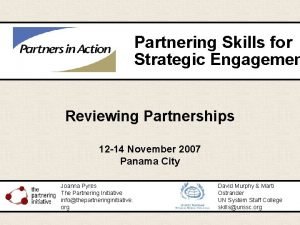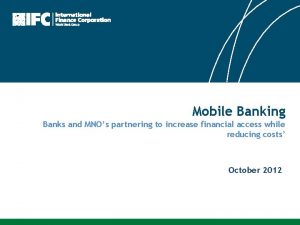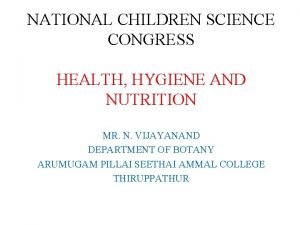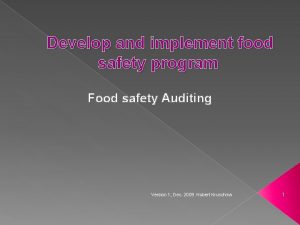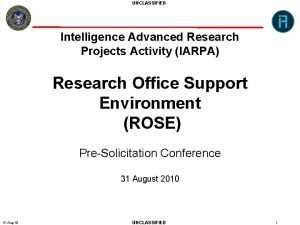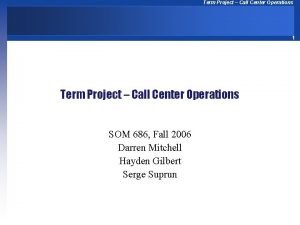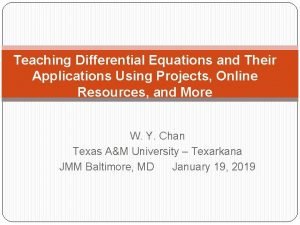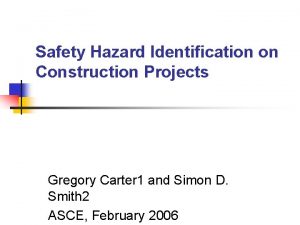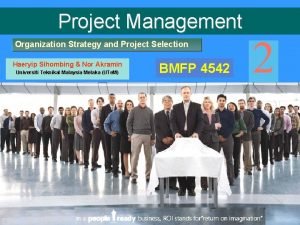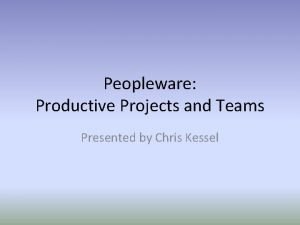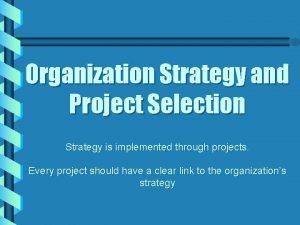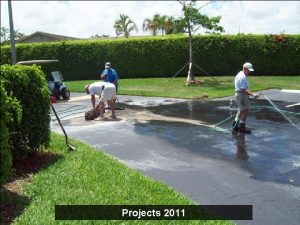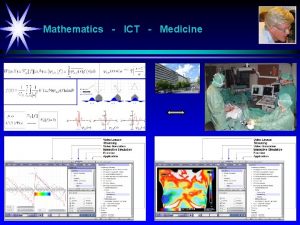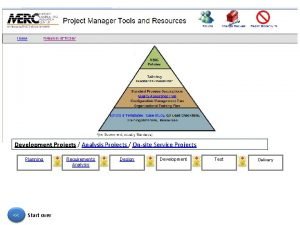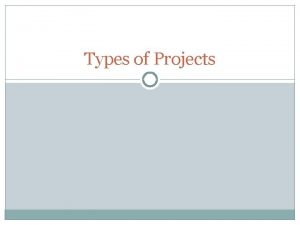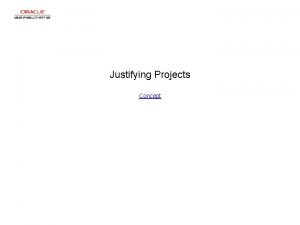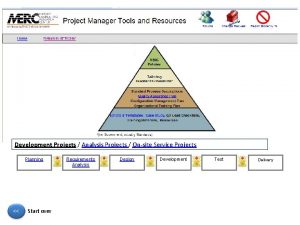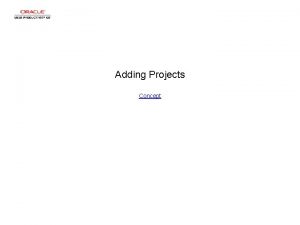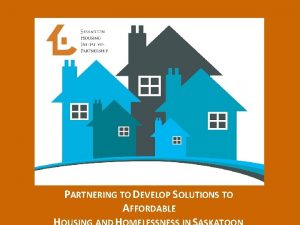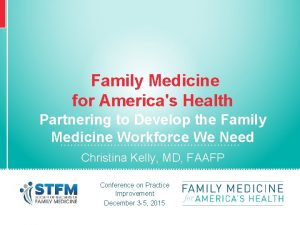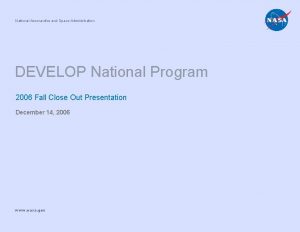DEVELOP National Program PARTNERING WITH DEVELOP PROGRAM PROJECTS

















- Slides: 17

DEVELOP National Program PARTNERING WITH DEVELOP: PROGRAM & PROJECTS OVERVIEW

What is DEVELOP? NASA DEVELOP Measurements and Predictions Communities DEVELOP bridges the gap between NASA Earth Science and society, building capacity in both its participants and end-user organizations to better prepare them to handle the environmental challenges that face society. DEVELOP is a dual-capacity building program: Partners & Participants DEVELOP is an incubator and accelerator for NASA Earth science applications

Dual-Capacity Building Participants Young Professionals, Students & Transitioning Professionals Scientific/Professional Development: • Experience using NASA Earth observations • GIS and remote sensing • Working in a group environment • Management and leadership skills Personal Development: • Presentation and communication skills • Personality typing and working with diverse groups (How NASA Builds Teams) Professional Networking: • NASA scientists and managers • Partner organizations • Peers – teams, center, and national End-User Organizations Local, State, Regional, Federal, Academic, International, and NGOs • Introduction to new methods to augment current practices: cost-saving & time-saving • Enhanced decision support through use of NASA Earth observations • Increased exposure to NASA Earth Science technologies and capabilities • Introduction to NASA’s Applied Sciences Program and its contributions to society • Opportunities for networking with the NASA community

DEVELOP Node Locations NASA Centers • • • Ames Research Center – Moffett Field, CA Goddard Space Flight Center – Greenbelt, MD Jet Propulsion Laboratory – Pasadena, CA Langley Research Center – Hampton, VA Marshall Space Flight Center – Huntsville, AL Stennis Space Center – Stennis, MS Regional Locations • • BLM at Idaho State University – Pocatello, ID International Research Institute – Palisades, NY Mobile County Health Department – Mobile, AL NOAA National Centers for Environmental Information – Asheville, NC Patrick Henry Building – Richmond, VA University of Georgia – Athens, GA USGS at Colorado State University – Fort Collins, CO Wise County Clerk of Court’s Office – Wise, VA

Project Characteristics > 350+ Participants Conducting 80+ Projects Per Year �Highlight the applications and capabilities of NASA Earth observations �Address community concerns relating to decision-making for real-world environmental issues �Partner with organizations who can benefit from using NASA Earth observations to enhance decision making by providing decision support tools �Align with at least one of the nine NASA Applied Sciences Program’s National Application Areas �Research is conducted by teams with diverse backgrounds under the scientific guidance of Science Advisors and mentors from NASA and partner organizations Rapid Feasibility & Implementation: 10 Weeks

Benefits of DEVELOP �ROSES Bookend: application feasibility or expansion of previous project Feasibility – wildfire risk mapping with TX Forest Service Expansion – levee seeps with Army Corps of Engineers �Partnership Development: engage with potential future partners DEVELOP conducted 91 projects partnering with 156 unique groups in FY 15 State and local-level partnerships are focus but program works with groups at all levels of decision making �Rapid Response: proven model for conducting quick, 10 -week projects – initiation to handoff River blindness with The Carter Center

Previous Project Examples Arizona Health and Air Quality East Africa Health and Air Quality Zanzibar Health and Air Quality Mobile County Health Department Gulf Coast Health and Air Quality Southeast US Health and Air Quality

Arizona Health & Air Quality Community Concern: Extreme heat exposure in Maricopa County, AZ is spatially variable. The network of cooling centers does not account for this variability, possibly missing places of greatest need. Partners: Arizona Department of Health Services, Environmental Remote Sensing and Informatics Lab at ASU, Center for Policy Informatics at ASU Impact: End-users were provided with a “riskscape” for heat related health hazards, allowing for the identification of areas of greatest need.

East Africa Health & Air Quality Community Concern: It has previously been demonstrated that climate and environmental factors (i. e. rainfall, temperature, vegetation type and inundation) are reliable predictors for outbreaks of vector borne diseases, including Leishmaniasis. Impact: This project explored the relationship between rainfall and inundation, in an effort to create flood detection products. Partners: Red Cross/Red Crescent Climate Center, City University of New York

Zanzibar Health & Air Quality Community Concern: Although transmission of the disease has declined significantly, Malaria is still present on the island of Zanzibar. New strategies to eradicate malaria require an understanding of how interventions affect the transmission of the disease in various contexts. Partners: Zanzibar Malaria Control Program Impact: Land cover classifications were used to identify various climatological and environmental factors that allow for the presence of malaria in the region. Bush/Shrubs Forest Sugarcane/ Rice Fields Urban Areas Mangroves

Fall 2015 New York Health & Air Quality Concern & Impact: With temperatures rising from global warming factors, the changing threedimensional landscape and lack of vegetation cause urban landscapes to trap larger amounts of heat. Extra heat produced by urban ecosystems is captured by the urban heat island could possibly contribute to global warming. Partners: Bureau of Environmental Surveillance and Policy, New York City Department of Health and Mental Hygiene; We Act for Environmental Justice; Columbia University, Mailman School of Public Health; Consortium for Climate Risk in the Urban Northeast Puerto Rico Health & Air Quality Concern & Impact: The Dengue and Chikungunya viruses have been declared endemic in Puerto Rico and the Caribbean. This project seeks to better understand drivers contributing to the spread of the virus. Partners: Puerto Rico Department of Health, US CDC Dengue Branch, Medical Sciences Campus of the University of Puerto Rico

Mobile County Health Department �Project partner in 2002 -2003 �Offered office space and resources to host a team at MCHD

Gulf Coast Health & Air Quality Community Concern: Presently (fall 2013), little attention is given to endemic Chagas Disease in the United States, despite the presence of vectors and a large reservoir population. The disease is transmitted by T. sanguisuga. Partners: Mobile County Health Department, University of South Alabama Impact: Species distribution maps were derived and then used to create maps of transmission risk for Chagas Disease. http: //earthzine. org/2013/11/17/ecological-niche-modeling-for-the-chagas-disease-vector/

Southeast US Health & AQ http: //earthzine. org/2014/03/30/pucker-up-kissing-bug-habitat-modeling-with-nasa-earth-observations/

Have a Project Idea? �Express interest to: Tiffani Miller, Tiffani. N. Miller@nasa. gov Lauren Childs-Gleason, Lauren. M. Childs@nasa. gov Dr. Kenton Ross, Kenton. W. Ross@nasa. gov �Work with DEVELOP to define project topic and scope, and compose a project proposal �Expectations: DEVELOP provides: participants (pay & limited travel), project management, science advising Partner provides: project idea, advising, active communication Any questions? Contact Tiffani. N. Miller@nasa. gov What we look for in a good project idea: • Achievable with NASA Earth observing resources over a 10 to 30 -week period • Addresses an actionable community concern • Robust communication with end-user • Specific study region rather than a large area • Expectations are clear

Project Idea & Proposal Timeline Spring Projects Collection of ideas & writing of proposals: due late September Spring Term: late January to early April Summer Projects Collection of ideas & writing of proposals: due early January Summer Term: early June to early August Fall Projects Collection of ideas & writing of proposals: due late April Fall Term: mid-September to mid-November

THANK YOU! QUESTIONS? NASA-DL-DEVELOP@MAIL. NASA. GOV
 Partnering to build customer relationships
Partnering to build customer relationships The partnering initiative
The partnering initiative Mnos partnering
Mnos partnering Finance business partnering definition
Finance business partnering definition What is partnering
What is partnering Partnering session
Partnering session National children's science congress projects ideas
National children's science congress projects ideas Develop and implement a food safety program
Develop and implement a food safety program National unification and the national state
National unification and the national state Optical illusions science fair project hypothesis
Optical illusions science fair project hypothesis Intelligence advanced research projects activity
Intelligence advanced research projects activity Call center projects
Call center projects Telecommunications project management
Telecommunications project management Differential equations projects
Differential equations projects Safety hazard identification on construction projects
Safety hazard identification on construction projects Project portfolio management matrix
Project portfolio management matrix Peopleware productive projects and teams
Peopleware productive projects and teams Jiyo implemented a strategy
Jiyo implemented a strategy

